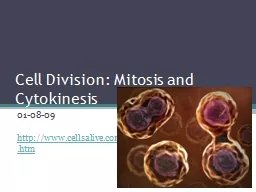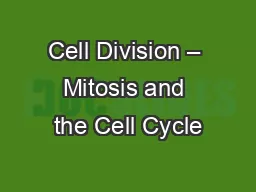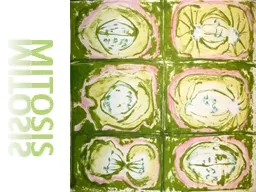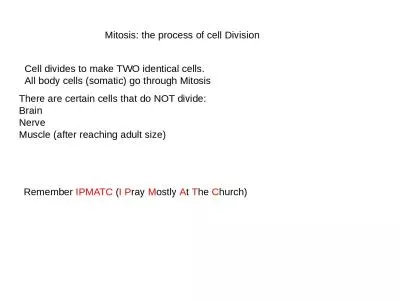PPT-Mitosis in Watermelons Watermelons grow from small to large through the process of Mitosis.
Author : WhiteGhost | Published Date : 2022-07-28
Interphase Chromosomes begin to duplicate Each bean represents 1 chromosome Watermelons have 22 chromosomes Nucleus Prophase Each chromosome now has a duplicate
Presentation Embed Code
Download Presentation
Download Presentation The PPT/PDF document "Mitosis in Watermelons Watermelons grow ..." is the property of its rightful owner. Permission is granted to download and print the materials on this website for personal, non-commercial use only, and to display it on your personal computer provided you do not modify the materials and that you retain all copyright notices contained in the materials. By downloading content from our website, you accept the terms of this agreement.
Mitosis in Watermelons Watermelons grow from small to large through the process of Mitosis.: Transcript
Download Rules Of Document
"Mitosis in Watermelons Watermelons grow from small to large through the process of Mitosis."The content belongs to its owner. You may download and print it for personal use, without modification, and keep all copyright notices. By downloading, you agree to these terms.
Related Documents














